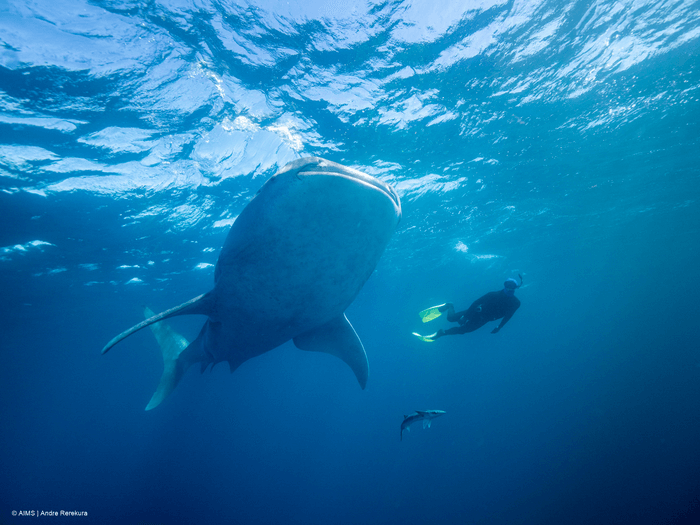CAPE FERGUSON, Australia — Sharks are notorious carnivores, but remarkable new research reveals that the whale shark is actually Earth’s largest omnivore. Marine scientists from the Australian Institute of Marine Science have found that these huge fish also eat plants.
Marine biologists have long considered whale sharks to be “filter feeders” that eat krill along the Ningaloo Reef in Western Australia. However, when the study authors analyzed a series of biopsy samples taken from whale sharks at the reef, it became clear that they had eaten a lot of plant material.
“It’s causing us to rethink everything we thought we knew about what whale sharks eat,” Australian Institute of Marine Science fish biologist Dr Mark Meekan said in a press release. “And, in fact, what they do in the open sea.”
Scientists have discovered whale sharks measuring up to 18 meters (59 feet) long.
“On earth, all the largest animals have always been herbivores,” adds Dr Meekan. “In the sea, we’ve always thought that animals that got really big, like whales and whale sharks, fed on a rung of the food chain with shrimp-like animals and small fish. Turns out, maybe the system of evolution on land and in water isn’t so different after all.
Whale sharks have an appetite for brown algae
To determine what the sharks might have eaten, the researchers collected samples of various possible food sources around the reef, ranging from tiny plankton to large algae. Next, they compared the amino acids and fatty acids found in plankton and plant material to those of whale sharks.
Sure enough, the whale shark tissue did indeed exhibit compounds found in sargassuma variety of brown seaweed common to Ningaloo, known to break off from the reef and float to the surface.
“We think that during evolution, whale sharks have developed the ability to digest some of this sargassum that enters their intestines,” says Dr Meekan. “So the vision we have of whale sharks coming to Ningaloo just to feast on these little krill is only half the story. In fact, they also eat a fair amount of algae.
CSIRO Oceans and Atmosphere organic biogeochemist Dr. Andy Revill analyzed whale shark tissue via compound-specific stable isotope analysis. He explains that this technology has opened the door for scientists to study what animals use for energy and growth, not just what they eat.
“Something like a whale shark, swimming in the water with its mouth open, will ingest a lot of different things,” he says. “But you don’t know how much was used by the animal and how much goes straight to the other end. Whereas stable isotopes, because they are actually incorporated into the body, reflect much better what animals actually use to grow.
Shark poo finds something surprising
Meanwhile, biological oceanographer Dr Patti Virtue, from the University of Tasmania’s Institute of Marine and Antarctic Studies, admits it was surprising to see the whale shark’s biochemical signature.
“It’s very strange, because in their tissues they don’t have the signature of a fatty acid or a stable isotope of an animal that feeds on krill.”
In the interest of covering all their bases, the researchers even scooped up whale shark droppings with a net for further analysis.
“The poo showed they were eating krill,” concludes Dr Virtue. “But they don’t metabolize a lot of it.”
The study is published in the journal Ecology.

